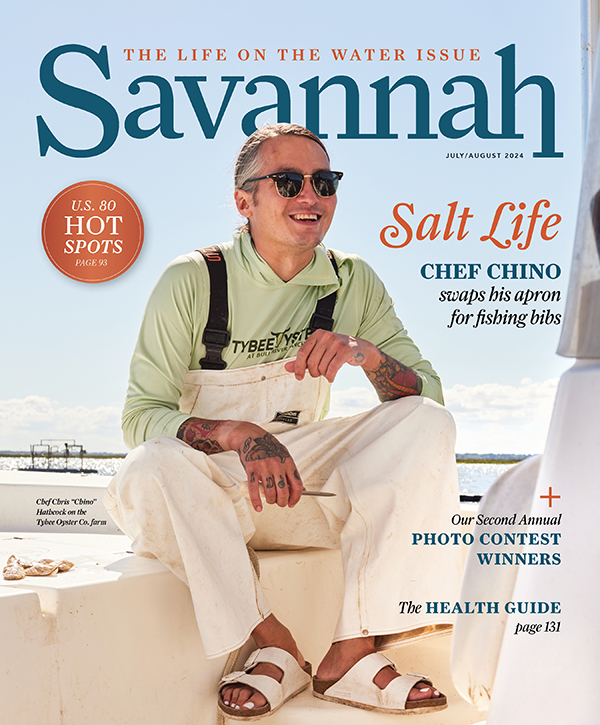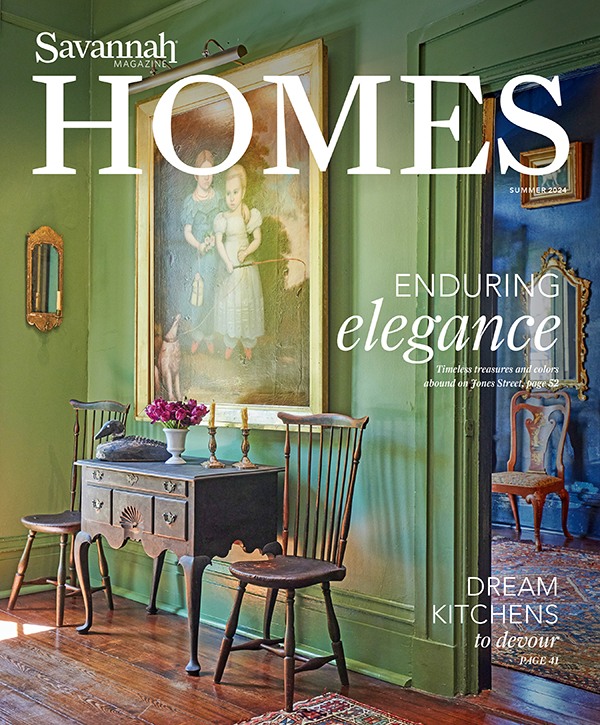The harrowing tale and captivating works of a Savannah shanghai
Artwork courtesy of TELFAIR MUSEUMS

pencil and crayon on paper, 9×11 15/16 inches
WILLIAM O. GOLDING (1874–1943) was an African American mariner and artist who shared a lifetime at sea in more than 100 vivid drawings, all from memory. But one can only guess at what Golding might have been and done in his life had the choice been his.
The adopted son of William A. Golding, one of the first African American members of the Georgia General Assembly, Golding might have followed in his father’s legislative footsteps; had an entire career as an artist; or done something else altogether. But one fateful day in 1882 charted Golding’s course for the rest of his life.
“It’s an incredible story, and one that nobody knows about.”
— Harry DeLorme
As he described in a 1932 letter, young Golding (sometimes written as Golden) was 8 years old and playing with his cousin at the Savannah waterfront. The boys spotted a ship called The Wandering Jew. The ship’s captain and his wife convinced Golding to come aboard for a “tour.” The nefarious couple showed Golding below deck. When he came back up, they were floating out to sea, the Tybee Light a blinking beacon in the ever-growing distance.
The little boy had been kidnapped.*

It would be more than 20 years before Golding saw Savannah again, and almost 50 before he returned to stay. What happened in between is not fully known, but it is clear from his drawings that Golding worked aboard many different ships: whalers, merchant ships, the steam yachts of New York’s elite and even a man-of-war battleship. And beginning April 1, the Telfair Museums will present Hard Knocks, Hardships, and Lots of Experience: The Art of William O. Golding at the Jepson Center. This will be the largest museum survey to date of Golding’s works, featuring 72 drawings loaned from private collections and museums.
Harry DeLorme, Telfair Museums’ director of education and senior curator, explains that although there are many unknowns about Golding’s life and harrowing kidnapping, documentation shows that he enlisted in the U.S. Navy in 1890 and was in the Navy until 1902. “That would have been the period of the Spanish-American War in Cuba, and the war in the Philippines that followed that,” DeLorme says. “And he did draw pictures of the Philippines and of a gun ship from the Spanish-American War.”
Golding was in contact with his family and back and forth from Savannah beginning in 1904, sadly 15 years after his father’s passing. But he continued to work aboard ships, the only life he had known since early childhood.

Newspaper listings from World War I show that Golding served as a merchant seaman during those years, and in 1917 was a survivor of a German U-boat attack in the English Channel. He also claimed to have rounded Cape Horn, notorious for being the world’s most dangerous ship passage, 23 times.
By the early 1930s, Golding was living in Savannah with his wife, Josephine. It seems he had retired due to health reasons, as he spent many years in and out of Savannah’s U.S. Marine Hospital. This hospital is where he began to draw his adventures at sea. According to Telfair Museums, these were “vibrant, remarkably detailed and expressive pencil and crayon drawings” that depicted “harbors from the East Coast to China, Vietnam and Indonesia, as well as his home port of Savannah.”

Golding clearly had a remarkable imagination as well. “He mixes time periods together,” says DeLorme, referencing a drawing of buildings along the Savannah River in the 1930s that also showed buildings from his childhood. “Another great piece is called Cape Horn, where he includes mythical elements like a Cape Horn post office with people strolling around it, while the real Cape Horn is very rocky and forbidding. And the most significant feature that you find in almost all his drawings is the sun drawn as a compass rose, as you might see on a nautical map.”
Ahmauri Williams-Alford, assistant curator of historical interpretation and programs, believes one of the most important pieces in the collection is named after Golding himself. “He titled it Wm. O. Golden, and Harry pointed out that it looks like the figurehead on the ship might be a self-portrait,” Williams-Alford says. “We don’t have any photos of what he looked like, so that was a nice find.”
DeLorme hails Golding as one of the great American artists of the 20th century — but also one of the most underrecognized. “It’s an incredible story, and one that nobody knows about,” he says. With the Jepson Center exhibition on display through Aug. 28, Telfair Museums hopes to change that.
* Later research shows no documentation of a ship called The Wandering Jew in Savannah in 1882 — but there was one by that name in 1880, which means Golding might have been as young as 6 when he was taken.
Contemporary Spotlight
New Acquisitions from the Brandywine Workshop


BEGINNING FEB. 4, Telfair Museums will showcase lithographs by 13 Black artists, all recently acquired from the Brandywine Workshop in Philadelphia.
With the noted exception of two pieces by Georgia-born painter Benny Andrews, this exhibition will feature important works on paper, all created in the late 20th or early 21st century by well-known and emerging female artists: Faith Ringgold, Deborah Willis, Emma Amos, Selma Burke, Sonya Clark, Gwendolyn Knight, Samella Lewis, Janet Taylor Pickett, Howardena Pindell, Alison Saar, Betye Saar and Lorna Williams.
Assistant curator Anne-Solène Bayan points to the relevance of the themes represented — the environment, spirituality, womanhood and the legacies of slavery in the United States. The exhibition will also “highlight the versatility of printmaking through an examination of the artists’ varied stylistic and conceptual approaches,” she says. Curated by Erin Dunn, Telfair’s curator of modern and contemporary art, the exhibition will remain on display at the Jepson Center through May 1.



